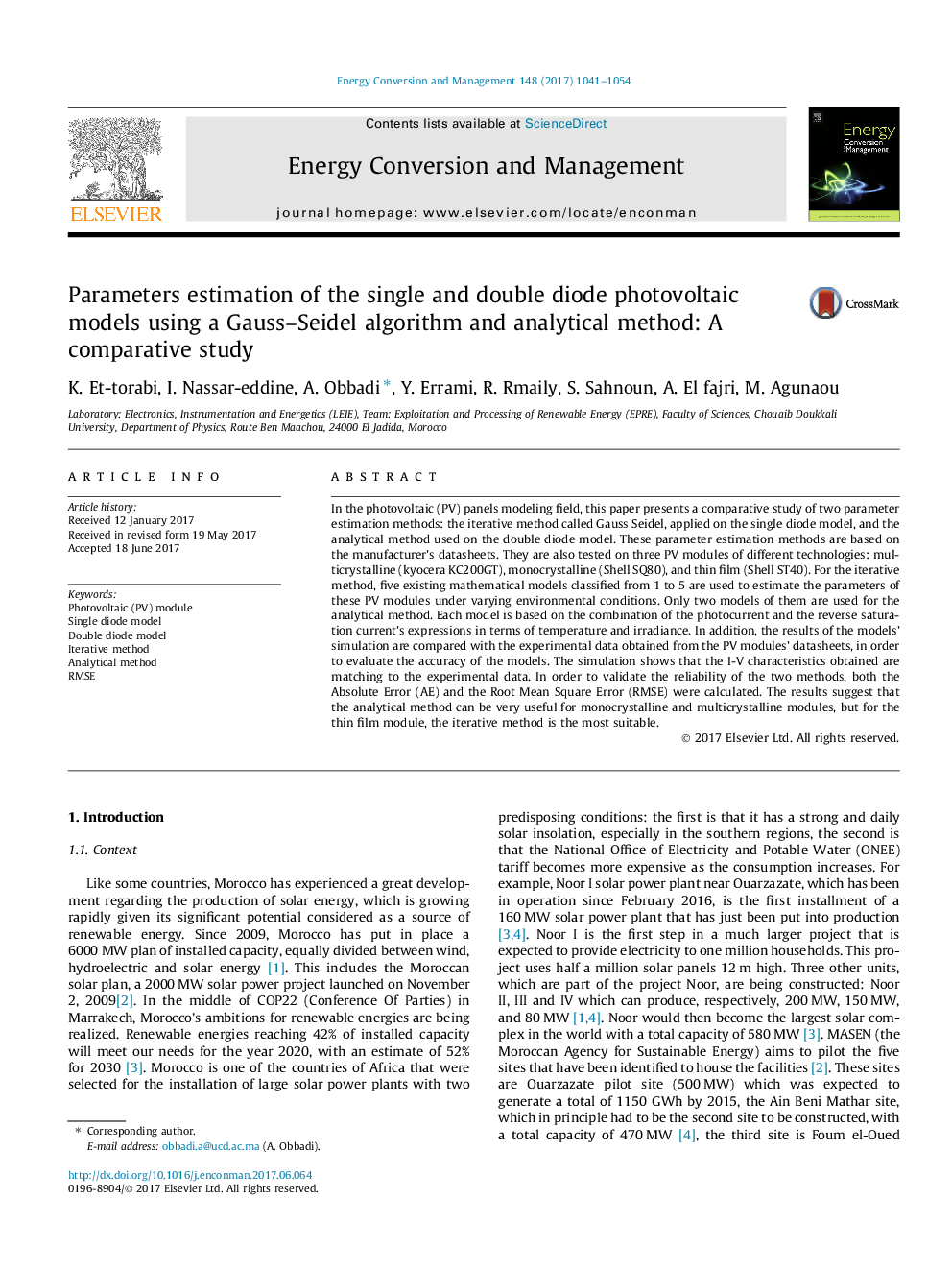| Article ID | Journal | Published Year | Pages | File Type |
|---|---|---|---|---|
| 5012592 | Energy Conversion and Management | 2017 | 14 Pages |
Abstract
In the photovoltaic (PV) panels modeling field, this paper presents a comparative study of two parameter estimation methods: the iterative method called Gauss Seidel, applied on the single diode model, and the analytical method used on the double diode model. These parameter estimation methods are based on the manufacturer's datasheets. They are also tested on three PV modules of different technologies: multicrystalline (kyocera KC200GT), monocrystalline (Shell SQ80), and thin film (Shell ST40). For the iterative method, five existing mathematical models classified from 1 to 5 are used to estimate the parameters of these PV modules under varying environmental conditions. Only two models of them are used for the analytical method. Each model is based on the combination of the photocurrent and the reverse saturation current's expressions in terms of temperature and irradiance. In addition, the results of the models' simulation are compared with the experimental data obtained from the PV modules' datasheets, in order to evaluate the accuracy of the models. The simulation shows that the I-V characteristics obtained are matching to the experimental data. In order to validate the reliability of the two methods, both the Absolute Error (AE) and the Root Mean Square Error (RMSE) were calculated. The results suggest that the analytical method can be very useful for monocrystalline and multicrystalline modules, but for the thin film module, the iterative method is the most suitable.
Keywords
Related Topics
Physical Sciences and Engineering
Energy
Energy (General)
Authors
K. Et-torabi, I. Nassar-eddine, A. Obbadi, Y. Errami, R. Rmaily, S. Sahnoun, A. El fajri, M. Agunaou,
